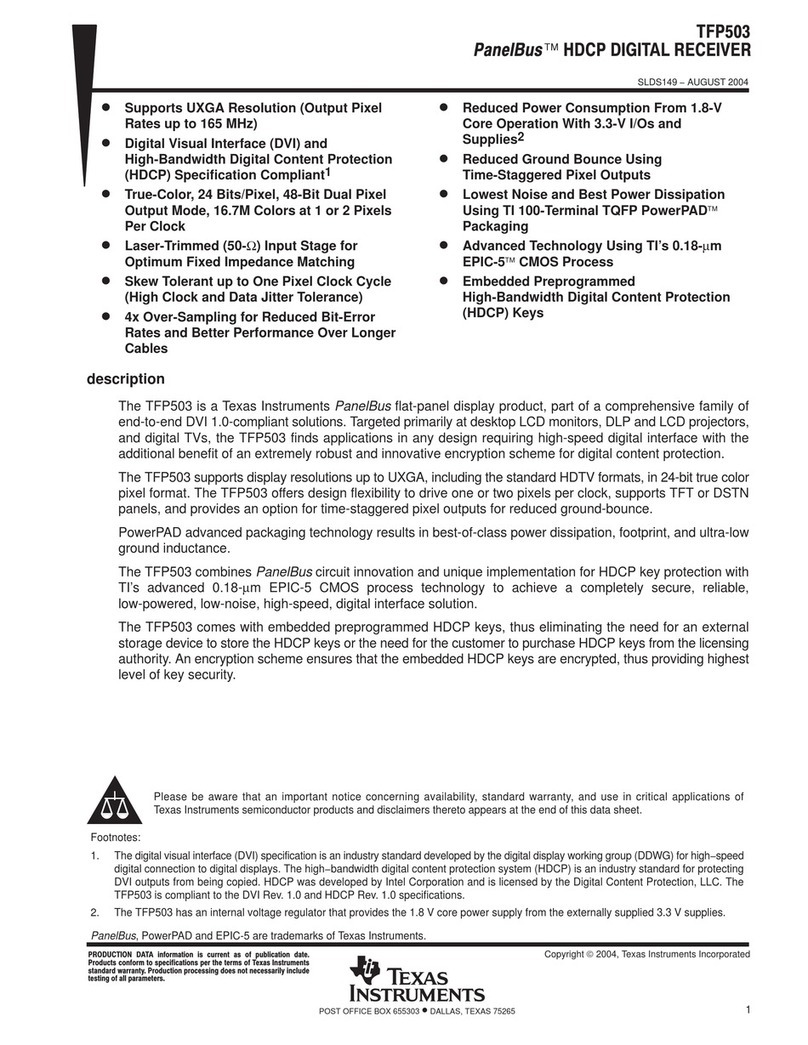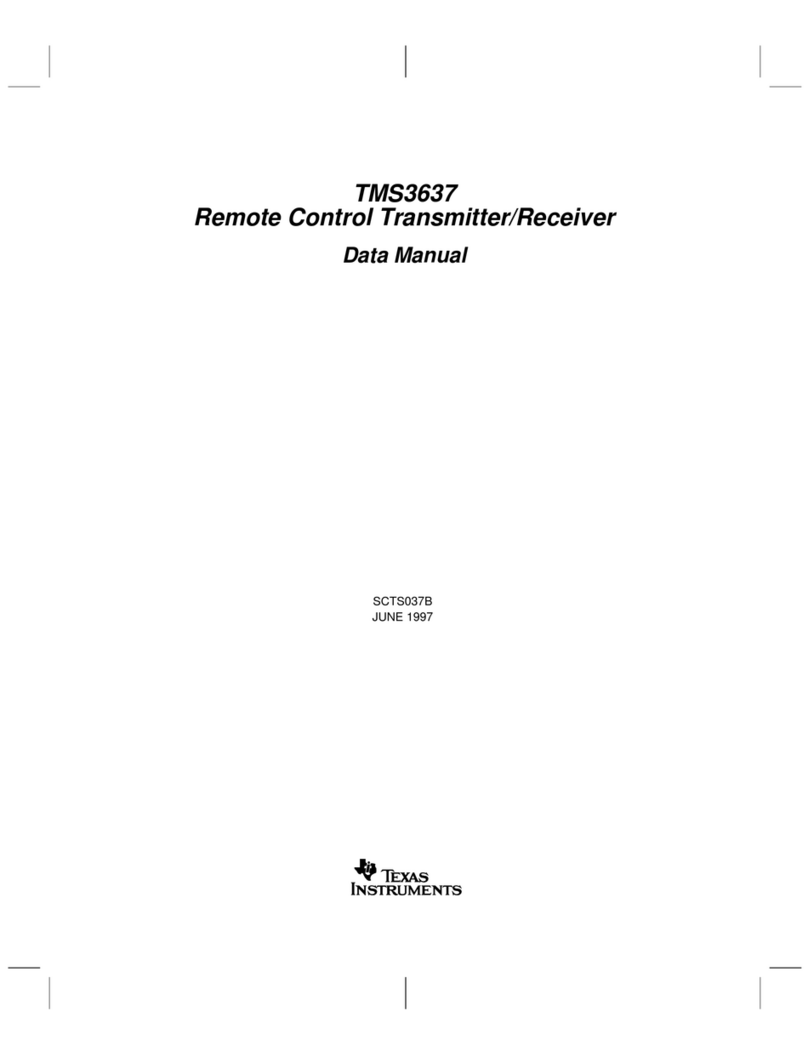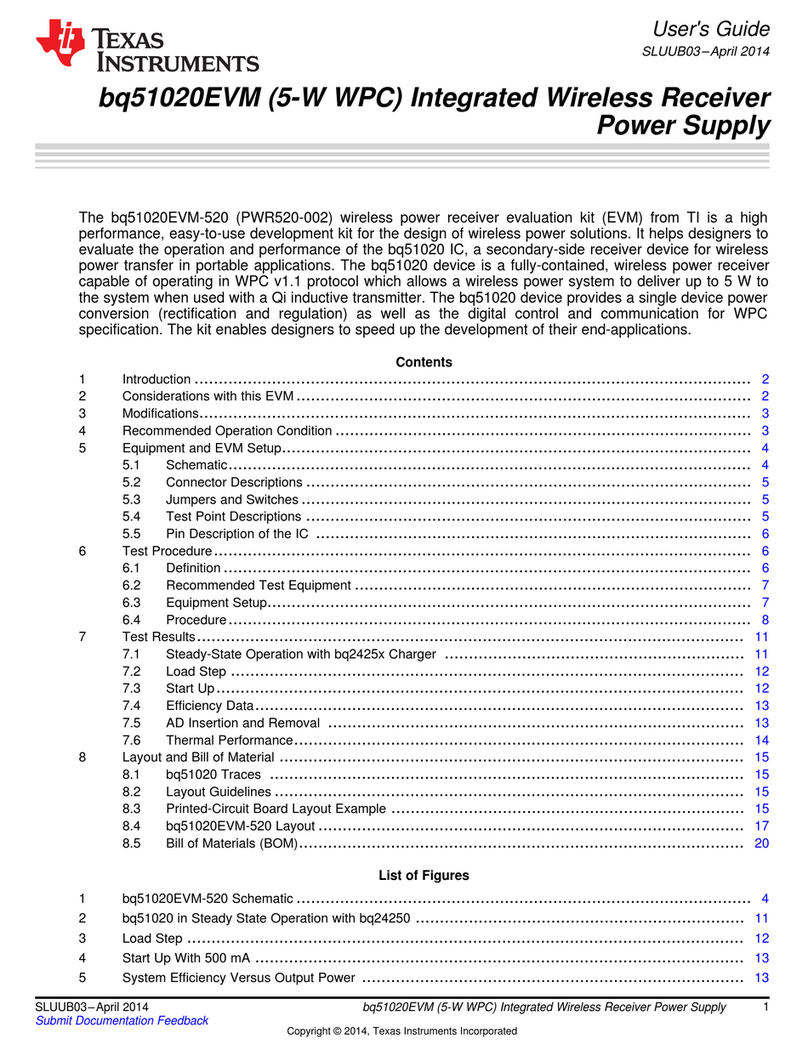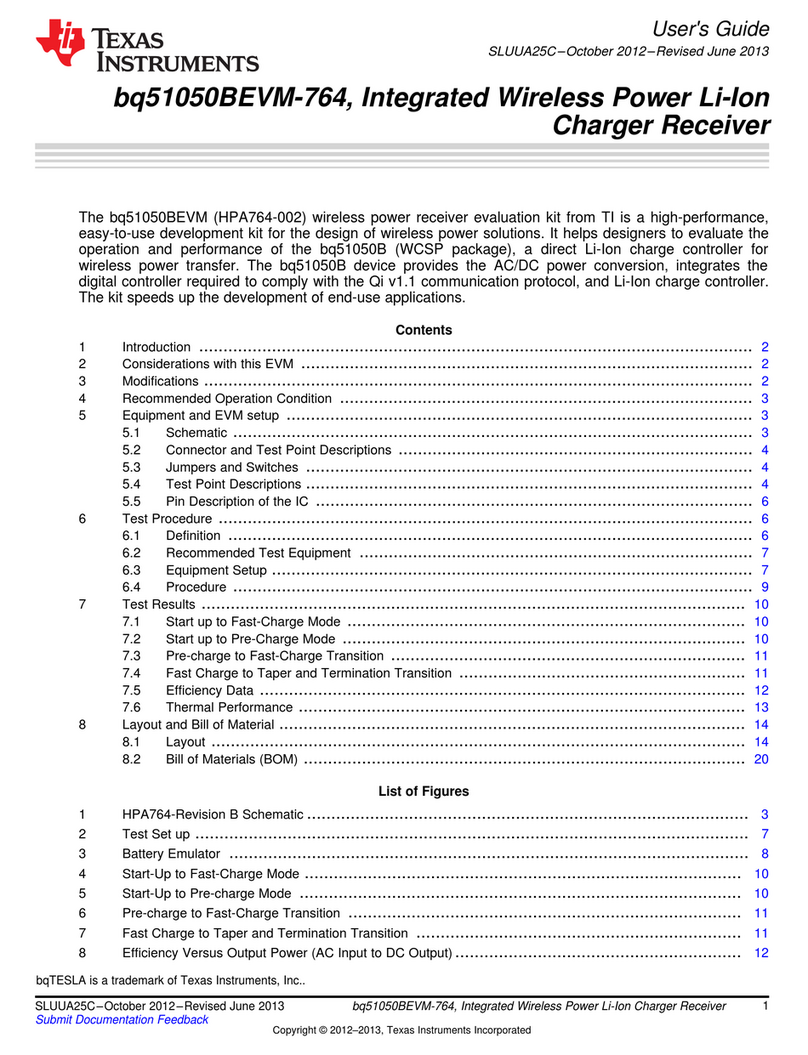
SWRU214 9
4.2 Packet Error Rate tester application
This application example requires 2 nodes for operation. Select the project ‘per_test’* in the IAR
workspace viewer and program both nodes.
*The PER test application is also preprogrammed on both of the CC2530EM boards found in the
CC2530DK. The CC2530DK Quick Start Guide describes how to run the preprogrammed PER test out
of the box.
The packet error rate test application sets up a one-way RF link between two nodes. One board will
operate as a transmitter and the other board will operate as a receiver. The transmitter node must be
configured with the output power to use and the number of packets to transmit as part of the PER test
(burst size). During a PER test the receiver node will display the number of received packets, the RSSI
level (signal strength) and PER.
The user configurable parameters for the test can be seen in Table 1. These parameters are set using
a menu on the LCD during initialization. The menu is navigated with the joystick (see arrows in the
display) and the settings are confirmed by pressing Button 1.
Parameter Settings
Channel 11 – 26 (2405 – 2480 MHz)
Operating Mode Receiver, Transmitter
TX Output Power -3 dBm, 0 dBm, 4 dBm
Burst Size 1K, 10K, 100K, 1M
Packet rate 100, 50, 20 or 10 packets per second
Table 1 User configurable parameters
Configure one node as receiver and the other node as transmitter by following the steps below:
PER Test Receiver configuration:
Perform the following steps to configure the receiver node:
1. Reset the board by cycling power.
2. Press Button 1 to enter the application menu.
3. Select a channel between 11 and 26. Navigate the menu by pressing joystick left or right, and
confirm the selection by pressing Button 1. Note the channel, since it will also be used for the
Transmitter node.
4. Select operating mode ‘Receiver’ and confirm with Button 1.
5. The Receiver node is now ready for operation, displaying ‘Receiver Ready’.
PER Test Transmitter configuration
Perform the following steps to configure the transmitter node:
1. Reset the board by cycling power.
2. Press Button 1 to enter the application menu.
3. Select the same channel as for the Receiver node. Navigate the menu by pressing joystick left
or right, and confirm the selection by pressing Button 1.
4. Select operating mode ‘Transmitter’ and confirm with Button 1.
5. Select TX output power by navigating the joystick. Confirm with Button 1.
6. Select the number of packets, either 1000, 10K, 100K or 1M. Press Button 1 to confirm.
7. Select packet rate; 100, 50, 20 or 10 packet per second. Press Button 1 to confirm.
8. Push the joystick down to start a PER test. The number of packets specified by burst size will
be sent to the Receiver node. Packet Error Rate, RSSI, and number of packets received are
displayed on the Receiver’s LCD panel.
9. The PER test can be stopped by pressing joystick down again.


































